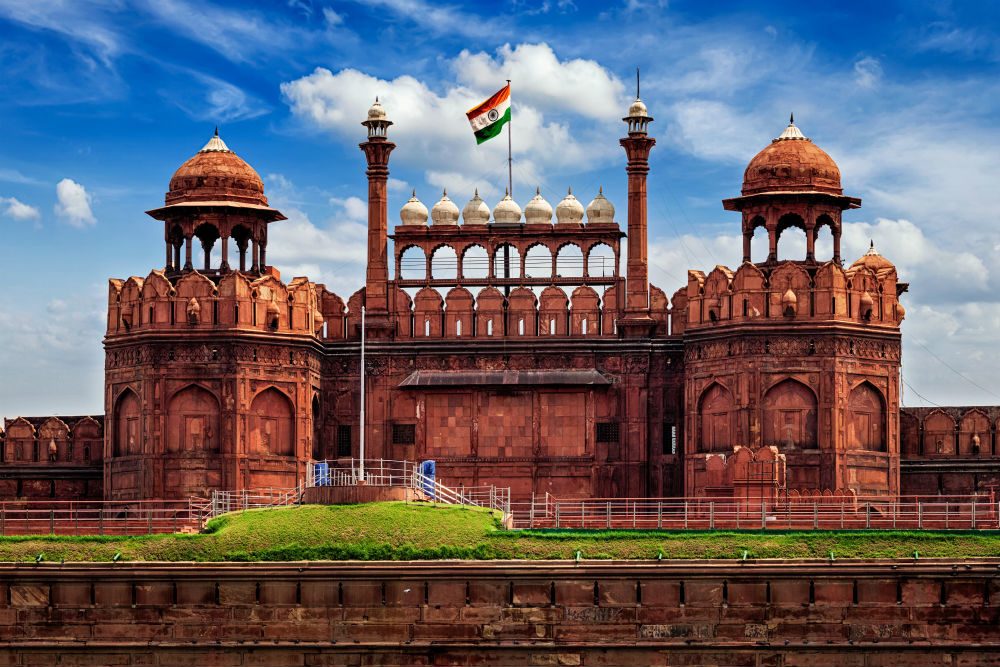Exploring the Taj Mahal: A Complete Guide
Standing before the Taj Mahal for the first time is a moment that feels almost surreal. Th enduring symbol of love and architectural masterpiece rises majestically on the banks of the Yamuna River in Agra, India, instantly evoking awe and admiration. Commissioned by Emperor Shah Jahan in 1632 in memory of his beloved wife Mumtaz Mahal, the Taj Mahal was born from a deep sorrow that followed her untimely death during childbirth. This UNESCO World Heritage Site is not just a monument but a manifestation of grief and eternal love, drawing millions of visitors each year to witness its poignant beauty. Here’s a detailed guide to what makes the Taj Mahal a must-visit destination and everything you need to know before planning your trip.
The Main Mausoleum
The Taj Mahal’s centerpiece is its iconic white marble mausoleum, an awe-inspiring structure housing the cenotaphs of Shah Jahan and Mumtaz Mahal. Standing before it, one is enveloped by a profound sense of wonder—the sheer scale, the intricate carvings, and the hushed reverence of the space create an almost spiritual experience. Adorned with intricate marble inlay work, calligraphy of Quranic verses, and geometric patterns, the mausoleum is a testament to Mughal architectural brilliance. Its perfectly symmetrical design ensures that it looks stunning from every angle.
The Four Minaret Towers
Surrounding the mausoleum are four slender minarets that rise gracefully into the sky. These minarets, slightly tilted outward to protect the main structure in case of an earthquake, add balance and elegance to the overall design.
The Reflecting Pool
The long reflecting pool in the front courtyard offers stunning mirrored views of the Taj Mahal, especially at sunrise and sunset, when the soft hues of the sky paint the marble in delicate shades of pink and orange. The tranquil atmosphere, punctuated only by the gentle murmur of water, makes this an unforgettable sight. This iconic feature adds to the ethereal beauty of the site, making it a favorite spot for photography.
The Gardens
The Taj Mahal’s Charbagh-style gardens are meticulously laid out to represent paradise on Earth. Divided into four quadrants by waterways, the gardens are filled with lush greenery and blooming flowers, creating a serene and tranquil ambiance.
Why the Taj Mahal is Worth Visiting
Architectural Marvel
The Taj Mahal is a harmonious blend of Persian, Islamic, and Indian architectural styles. Its flawless symmetry, intricate marble carvings, and innovative design elements, like the optical illusion of its size and proportions, make it a marvel to behold.
Symbol of Love
Built as a testament to Shah Jahan’s eternal love for Mumtaz Mahal, the Taj Mahal’s story adds a deeply emotional layer to its beauty. It’s not just a structure; it’s a monument of devotion and loss, embodying the heartache of an emperor who sought to immortalize his beloved wife. The Taj Mahal whispers stories of love that transcends time, inviting every visitor to feel the weight of its history and the depth of its emotional resonance.
UNESCO World Heritage Site
Recognized globally as one of the greatest human-made wonders, the Taj Mahal is a symbol of India’s rich history and culture. Its inclusion on the UNESCO World Heritage list underscores its universal value.
Visual Spectacle
The Taj Mahal changes colors throughout the day—soft pink at dawn, dazzling white under the midday sun, and golden hues during sunset. The play of light and shadow enhances its breathtaking beauty.
Important Considerations When Visiting
Ticket Booking
It’s advisable to book your tickets online in advance to avoid long queues. The Archaeological Survey of India offers separate ticket categories for access to the main mausoleum and general entry to the complex.
Dress Code
While there’s no strict dress code, wearing modest clothing is recommended out of respect for the cultural and religious significance of the site.
Photography
Photography is allowed in most areas of the complex, but tripods are not permitted. Inside the main mausoleum, photography is restricted, so make sure to follow the rules.
Best Time to Visit
The best time to visit the Taj Mahal is from October to March, when the weather is pleasant. Early mornings and late afternoons offer the most spectacular views and are less crowded.
Beyond the Taj Mahal
Agra Fort
Just 2.5 kilometers away from the Taj Mahal, the Agra Fort is another UNESCO World Heritage Site. This massive red sandstone fort was the Mughal seat of power and offers stunning views of the Taj Mahal from its ramparts.
Baby Taj
The Itimad-ud-Daulah’s Tomb, often referred to as the "Baby Taj," is a beautiful Mughal-era tomb that served as an architectural precursor to the Taj Mahal. Its delicate marble work and intricate designs are worth exploring.
Local Markets
Agra’s bustling markets are perfect for picking up souvenirs such as marble inlay artifacts, leather goods, and traditional jewelry. Sadar Bazaar and Kinari Bazaar are popular spots for shopping.
Conclusion
The Taj Mahal is more than just a monument; it’s an experience that combines history, art, and emotion. Whether you’re marveling at its architectural details, enjoying the serene gardens, or exploring the nearby attractions, a visit to the Taj Mahal is sure to leave you spellbound. Plan your trip, and prepare to be captivated by this timeless wonder!




Comments
Post a Comment